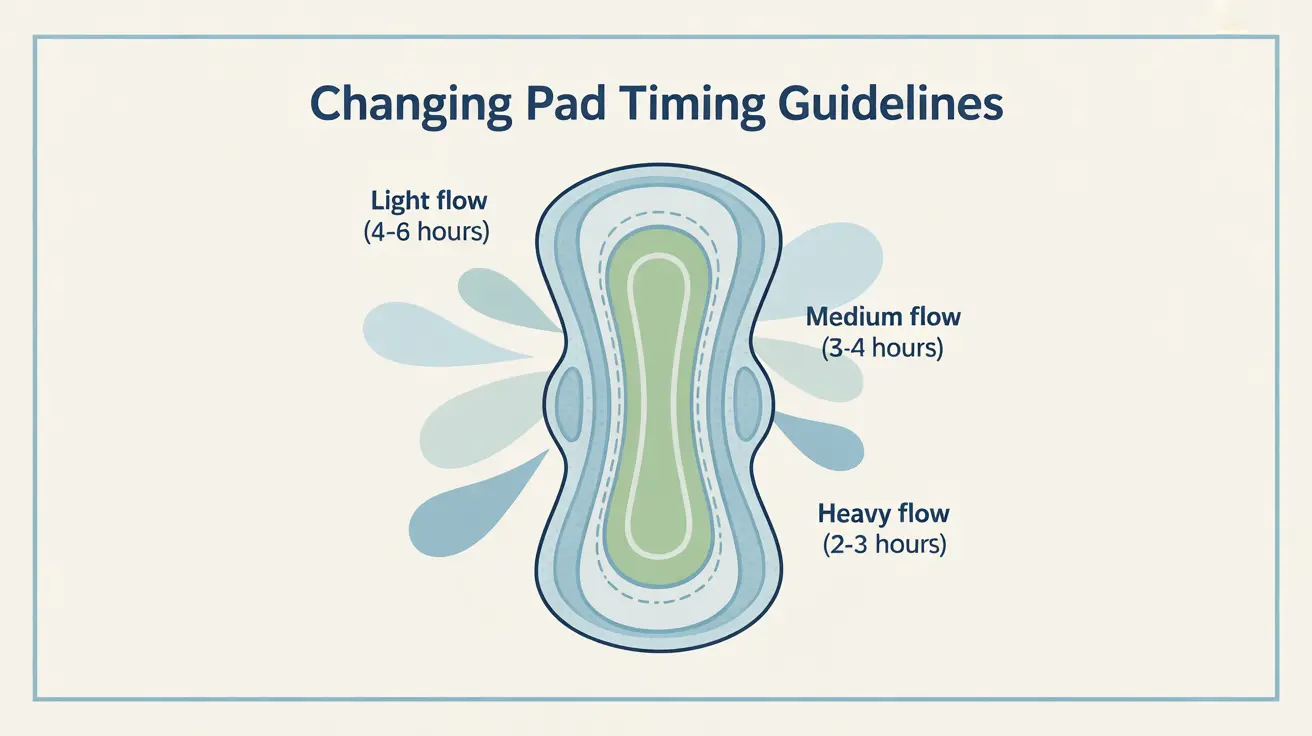Managing menstrual hygiene effectively is crucial for comfort and health during your period. One of the most common questions people have is about how long they can safely wear a pad. Understanding the right timing for pad changes can help prevent discomfort, leaks, and potential health issues.
This comprehensive guide will help you understand the optimal duration for wearing pads, signs it's time for a change, and best practices for maintaining proper menstrual hygiene.
Recommended Time Limits for Wearing Pads
The general recommendation is to change your pad every 4 to 6 hours, regardless of flow intensity. However, during heavy flow days, you might need to change more frequently, possibly every 3 to 4 hours. This timing helps prevent bacterial growth and ensures optimal absorption.
During lighter flow days, while you might be tempted to wear a pad longer, it's still important to maintain regular changes to prevent potential hygiene issues and discomfort.
Factors Affecting Pad Change Frequency
Flow Intensity
Your menstrual flow significantly impacts how often you need to change your pad:
- Heavy flow: Change every 3-4 hours
- Medium flow: Change every 4-6 hours
- Light flow: Change every 6 hours
- Spotting: Change at least twice daily
Activity Level
Physical activity can affect how frequently you need to change your pad:
- During exercise or swimming: Change immediately after
- Regular daily activities: Follow standard timing
- Extended sitting: May require more frequent changes due to compression
Overnight Pad Usage
For nighttime protection, use overnight pads specifically designed for extended wear. These pads are typically longer and more absorbent than regular ones. Even with overnight pads, it's important to change them as soon as you wake up, as wearing the same pad for more than 8 hours isn't recommended.
Signs It's Time to Change Your Pad
Watch for these indicators that signal it's time for a pad change:
- Feeling of moisture or discomfort
- Visible saturation through the pad
- Pad feeling heavy or full
- Any odor development
- Pad shifting or bunching
- Leakage around edges
Health Risks of Wearing Pads Too Long
Wearing a pad for extended periods can lead to several health concerns:
- Bacterial growth and potential infections
- Skin irritation and rashes
- Unpleasant odors
- Increased risk of vaginal infections
- Potential staining of clothes
- Discomfort and chafing
Frequently Asked Questions
How often should you change your pad during your period for good hygiene?
For optimal hygiene, change your pad every 4-6 hours during your period. During heavy flow days, you may need to change more frequently, while on lighter days, you can extend this slightly but should still maintain regular changes.
Can you wear a pad all day or overnight, and what is the safe time limit?
It's not recommended to wear a regular pad all day. The maximum safe time limit is 6-8 hours, and this applies to overnight pads specifically designed for extended wear. Regular pads should be changed more frequently during the day.
What happens if you wear a pad for too long without changing it?
Wearing a pad too long can lead to bacterial growth, skin irritation, unpleasant odors, and potential infections. It also increases the risk of leakage and staining of clothes.
How does menstrual flow affect how frequently I need to change my pad?
Heavier flow requires more frequent changes (every 3-4 hours), while lighter flow might allow for slightly longer wear time (up to 6 hours). Always monitor saturation levels and change before the pad becomes completely soaked.
What signs indicate that it's time to change my pad to avoid discomfort or leaks?
Key signs include feeling of moisture, visible saturation, pad feeling heavy, development of odors, pad shifting position, or any sensation of discomfort. Change your pad immediately if you notice any of these signs.




